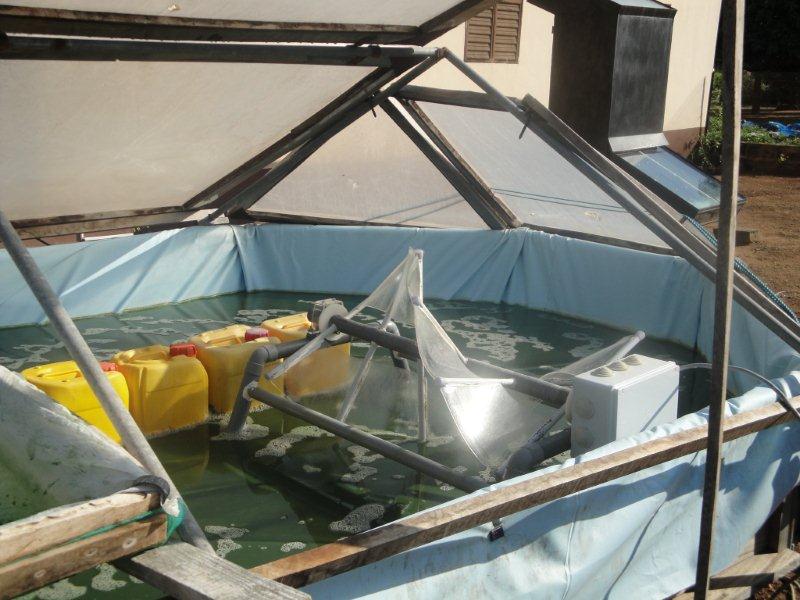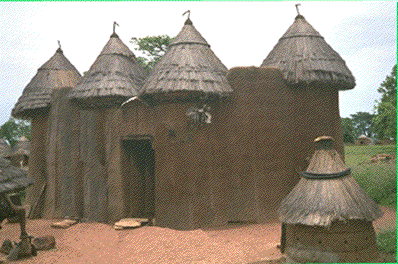Bana du Bénin
Aide Humanitaire au Bénin
| Association régie par la loi 1901-Reconnue d'intérêt Général en mars 2006 |
 |  |  |  |  |  |  | |||
|---|---|---|---|---|---|---|---|---|---|
| Home | History | Location | Orphanage | Schools | Spirulina | Villages | Actions | About us | Become a member |
| It is situated in the gulf of Guinea, the coast of the Atlantic ocean. It is a narrow north-south strip of land, in the shape of a fist, narrow along the coast and widening towards the north. It borders Togo to the west, Nigeria to the east and Niger and Burkina-Faso to the north. It was a surface area of 112.622 km², and a population of about 7.500.000 inhabitants. The population growth was 2,91% in 2002 (fertility per woman: 6,14). Life expectancy is 48,8 years for men and 50,6 years for women. Ranked 161 out of 177 countries on the human development indicator, the economic level is very low although the growth rate has been stable since 1999 (6,7% in 2003). between TOGO to the West and the NIGERIA to the East Non-return gate in Ouidah |
A bit of history: the three
kingdoms of Allada, Porto Novo and Dã Homè -in the belly of the king
Dã- was fonded by the Fon people, who occupied the south of the country
(the name DAHOMEY was given to the whole country after the French
conquest). According to the legend, the daughter of the king of Tado (a
town on the river Mono) was impregnated by a leopard, while she was
drawing water. She gave birth to a son who became the founder of the
entire dynasty. His descendants founded a kingdom at Allada in the C16.
The following century, three brothers disputed the throne; the first,
Kopkon kept the kingdom of Allada, the second, Do-Aklin founded Abomey
and the third, Adjatché which later became Porto-Novo. The
kingdom of Abomey was founded in 1625, and became a powerful state
between 1645 and 1685. The king Houegbadja, grandson of Do-Aklin,
wanted to annex a neighbouring state. The king Dã, defied him and was
decapited at Abomey and his body was thrown into the foundations of the
palace which was under construction. Thus Dã Homè was born. |
||||
|
1958 : The
republic of DAHOMEY was proclaimed on December 4th, under French direction. APITHY became the first President of the council in this government. 1959 : saw the setting up of Mali federation, followed by the break up of the political parties.
Emile Derlin ZINSOU resigned and APITHY took over as the head of a National Unionist government. He resigned on 21st of May 1959. He was replaced by Hubert MAGA who proclaimed independence on 1st of August 1960. 1963 : President Hubert MAGA was toppled by General Christophe
SOGLO. 1964 : There was a return to a civil administration. First APITHY became President and then Justin AHOMADEGBE took over. 1965 : Tahirou CONGAKOU was toppled by a coup d’état by General SOGLO. 1968 :(31 mars) new constitution . Dr Emile Derlin ZINSOU became President but, he was toppled by a new military coup d'etat led by Maurice KOUANDETE, SINZOGAN and Paul Emile de SOUZA on 10th of December 1968. Lt-Cl Paul Emile de SOUZA became the next head of state. 
|
||||
| 23rd february 1972 : Political and civil unrest. 26th october 1972 : A successful coup d’etat by Gal Mathieu KEREKOU who imposed a marxist-leninist government. DAHOMEY became BENIN. 1974 : Nationalisation. 1975 : Capitaine AIKPE, the Domestic minister, was accused of adultery with the head of state's wife . He was executed. 18th october 1975 : A plot by Dr ZINSOU ,who was in exile in Paris, was implimented. 30th november 1975 : The Popular Republic was declared. 1st et 2nd of february 1976 : 11 « zinzonistes » were sentenced to death. 16 janvier 1977 : There was an attempted plot by Bob DENARD (possibility supported by Gabon, Morocco and France ?) 1984 : President KEREKOU was elected again and there was a political amnesty . |
1988 : according to Amnesty International, more than
200 political prisoners were released without charge or judgment. 1989 : Mathieu KEREKOU was elected once more as President. He renounced the marxist-leninist ideology. 1990 : The 1977 constitution was suspended and the parliament was dissolved. Nicéphore SOGLO was put in charge of a transitional government. Mathieu KEREKOU agreed to
govern with opposition and organised free elections. 1991 : General elections : N. SOGLO was elected, Mathieu KEREKOU was defeated. 1996 : Mathieu KEREKOU returned as President once more. 2001 : KEREKOU remained as President, but he was ineligible to stand again in 2006, because he had reached retirement age. 2006 (février) : Saw the democratic election of Thomas Yayi BONI. |





